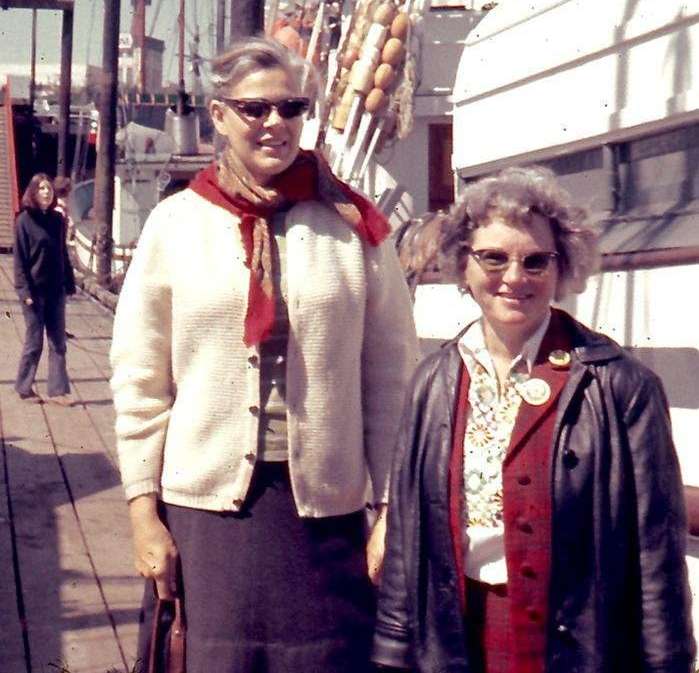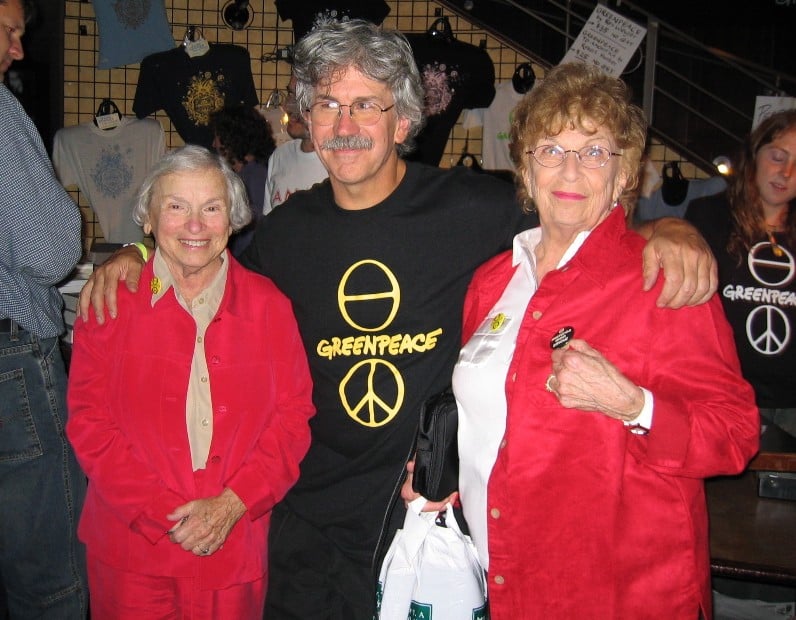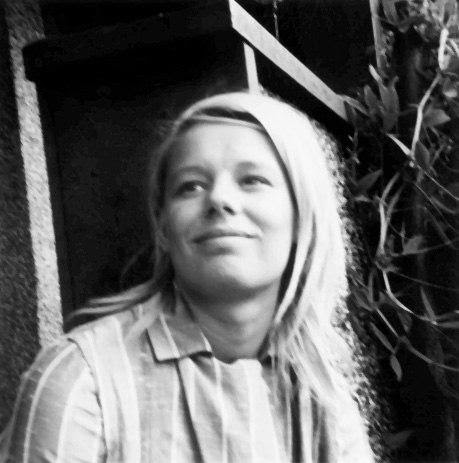Almost 50 years ago, none of the people who took part in the voyage to protest nuclear testing near Amchitka Island in Alaska imagined that that act of courage would spark a global movement to fight for the protection of our planet. Many were involved in the organizing of that first trip and what would then become what is now Greenpeace. In honour of Women’s History Month, we want to highlight the women who were part of the start of this incredible journey.
Dorothy Stowe
Dorothy Stowe would have turned 100 years old last December. She passed away peacefully ten years ago in Vancouver, Canada, where she co-founded Greenpeace with her husband Irving and other pacifists and ecologists.
Dorothy had a big heart and knew how to put hard work into organizing social change. During the early years of Greenpeace, Dorothy served as a stabilizing, inclusive influence, who inspired people to help and made everyone feel valued and essential to the movement.
Marie Bohlen

Marie Bohlen was a nature illustrator, a Sierra Club member and a pacifist. She immigrated with her family to Vancouver, Canada in 1967, where they met Dorothy and Irving and co-founded the Don’t Make A Wave Committee, which would later become Greenpeace.
In February 1970, while discussing how to stop US nuclear bomb tests in Alaska, Marie proposed the idea of sailing a boat up to the test site and confronting the bomb. This, of course, became the first Greenpeace campaign.
Dorothy Metcalfe

Dorothy Metcalfe had been a reporter at the Winnipeg Tribune in Canada when she met journalist Ben Metcalfe. During the first Greenpeace campaign, she converted her home into a radio room, relaying radio reports from Ben – who was on the Phyllis Cormack – to the world’s media.
When the US delayed the test, and the crew contemplated safe harbour in Kodiak, Alaska, Dorothy encouraged them to push on toward the Aleutian Islands. “The momentum is building,” she advised. Dorothy lobbied Canadian Members of Parliament, which resulted in three motions urging the US to cancel the test.
Zoe Hunter

Zoe Hunter was a member of the UK Campaign for Nuclear Disarmament when she met Bob Hunter in London in 1962. She was the one who introduced him to the pacifist work of Bertrand Russell and took him on the 1963 peace march to the Aldermaston nuclear facility, Hunter’s first political protest. Zoe also worked with Dorothy Stowe and Dorothy Metcalfe to provision the first two Greenpeace ships.
We must acknowledge the women who were part of the movement that started Greenpeace back in 1970, whose stories are often overseen. Even though, in the end, the Amchitka voyage carried only men, the endeavor wouldn’t have happened without the women’s influence and on-the-ground support. Bob Hunter, another one of Greenpeace founders later commented that this had been a mistake and that half of the crew should have been women.
No comments:
Post a Comment
Note: Only a member of this blog may post a comment.